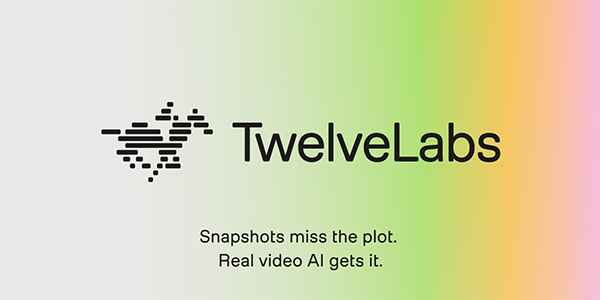The AI moment in advertising is exiting the trough of disillusionment and entering the slope of enlightenment, but video is still a glaring blind spot.
Video is where attention lives, yet most “AI for video” still treats it like a pile of screenshots and a transcript. That misses what matters in motion pictures: sequence, sound and telling a story over time.
If your AI only sees snapshots, you’ll never get the plot, just the frames. That’s why contextual video intelligence is shallow, workflows remain manual and high-value inventory stays under-monetized.
That’s beginning to change. AI models now have the ability to understand video in sequence. This shift is already reshaping what’s possible for stakeholders across creative ops, yield and fill, targeting, measurement and brand suitability.
And, as with other AI inflection points, the velocity of change is only accelerating.
Why text-based LLMs and computer vision won’t solve the contextual video challenge
The current state of video context is surface level at best. Keyword-scraping, metadata-tagging and probabilistic classification still dominate. This results in suitability misfires, as ads show up next to content that looks fine in isolation but feels inappropriate in sequence. Meanwhile, there are missed monetization opportunities, like sports storylines buried in sitcoms that will never be seen as “sports” and wasted spend when brands can’t align budgets with true context.
In theory, AI should fix this. And in text, display and search, it already has by powering ranking, categorization and segmentation at scale. But both text-based LLMs and traditional computer vision (CV) approaches were built for static analysis, not temporal understanding.
When applied to video, they create the same fundamental problems:
- Narrative understanding gaps. Text-first models take frame-by-frame snapshots, maybe add a transcript and then describe what they see. You might get “this looks like someone holding a beverage at a party,” but you’ll miss whether that person is casually socializing at a celebration, as part of a concerning drinking storyline or in a scene that transitions into problematic behavior.
- Scale and cost explosion. To improve accuracy, you may prompt your LLM to brute-force more snapshots, because more data points should mean better results, right? But more processing means exponentially higher costs. At list prices that can run around $7.50 per hour of video processed for LLMs, scaling across a video archive or FAST catalog will make the ROI of your AI investment crater.
What true video intelligence looks like
AdExchanger Daily
Get our editors’ roundup delivered to your inbox every weekday.
Daily Roundup
Video is a universal language, mirroring how we perceive reality. Solving for video requires video-native AI that treats the medium on its own terms.
Instead of converting moving pictures into stills, multimodal models consume video directly and understand the spatial-temporal relationships that create narrative. They take in visuals, dialogue, on-screen text, sound and motion, encoding all of it into rich representations that machines can act on.
That’s the difference between simply spotting a car and knowing whether it’s a chase, a repair demo or a luxury lifestyle shot. Sequence, tone and intent become visible in ways tags or captions can never reveal.
Where the value shows up first
True video understanding will finally allow our industry to deliver on the promise of genuinely relevant advertising that lifts all boats.
Publishers will increase revenue per user while decreasing ad load as video-native AI supercharges content recommendation engines. This will lead to longer watch hours and creative-to-context matching with the intelligence of humans and command premium CPMs that are justified by brand recall, lift and performance metrics.
Ad tech companies will flourish and grow with scene-level, not frame-level, video intelligence capabilities, from quality assurance and creative registration to context-aware deal curation, ad pod planning and scene-level measurement and analytics.
Consumers will reap the benefits of a vibrant, affordable and less-intrusive ad-supported premium video ecosystem hydrated by brand experiences that suit the content they consume, wherever and whenever they choose to watch or scroll.
The proof is in the plumbing
These capabilities aren’t theoretical. At Maple Leaf Sports & Entertainment, highlight reels previously took 16 hours to produce. By making their archive semantically searchable and plugging in an AI-driven editing flow, the process now takes nine minutes.
Across the ecosystem, many others are already moving beyond legacy tools and turning to video-native AI to unlock black box and, in turn, the full potential of their video content.
Take a spirits brand that is looking for “sophisticated entertaining at home.” Publishers can use video-native semantic search queries for “upscale dinner party preparation” to instantly surface dozens of contextually relevant clips from cooking shows and lifestyle segments, enabling same-day deals with placements that feel native.
FAST channels, meanwhile, struggle with low fill rates despite offering quality content. Labeling workplace sitcoms only as “comedy,” for instance, hides small business scenarios that are ideal for B2B ads, family dinner scenes that are perfect for CPG or dating storylines that could work for lifestyle brands. Video intelligence surfaces these contexts, expanding addressable inventory and lifting CPMs through genuine relevance.
From blind spot to breakthrough
Video is already our dominant medium, projected to capture 58% of all US TV and video ad spend in 2025 – growth that outpaces nearly every other format. Yet, without true understanding, the billions pouring into CTV, FAST and social video will keep running into the same walls: blunt suitability controls, underfilled inventory and creative workflows that can’t keep up with demand.
Publishers need to unlock every monetizable moment in their catalogs, while advertisers need precision context to protect brands and improve ROI. Agencies need automation that frees talent from clip-hunting so they can focus on strategy. And ad tech platforms need embedded video intelligence engines to build defensible moats in an AI-first market.
The fix is overdue. It’s time to stop guessing about context from frames and start understanding stories. When video is treated as the rich source of data it is, the blind spots disappear and the industry gains what video has always promised: addressability, automation and measurable value that’s worth every dollar spent.














